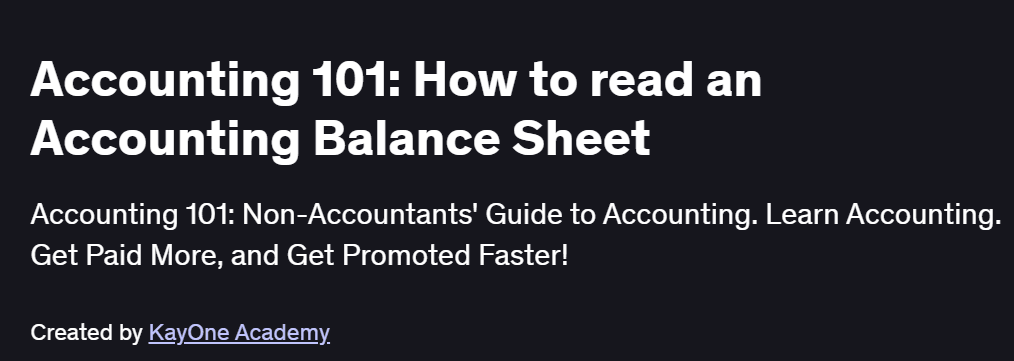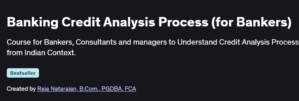What will you in Accounting 101: How to read an Accounting Balance Sheet Course
- Understand the basic structure of financial statements and their components.
- Learn how to read and interpret a balance sheet.
- Gain insights into assets, liabilities, and equity on a balance sheet.
- Understand how balance sheets reflect a company’s financial health.
- Build confidence in evaluating companies’ financial positions using balance sheets.
Program Overview
Module 1: Introduction to Financial Statements
⏳ 20 minutes
Overview of financial statements and their role in business.
Introduction to the three main financial statements: balance sheet, income statement, and cash flow statement.
Understanding the key terminology used in financial reports.
Module 2: Understanding the Balance Sheet
⏳ 30 minutes
Structure of the balance sheet: assets, liabilities, and equity.
How the balance sheet reflects a company’s financial health.
How to analyze the balance sheet for key insights.
Module 3: Assets and Liabilities
⏳ 40 minutes
The difference between current and non-current assets.
Types of liabilities: short-term and long-term.
Analyzing the company’s debt and asset management.
Module 4: Equity and Financial Ratios
⏳ 40 minutes
What equity represents in a company.
How to calculate and interpret common financial ratios: debt-to-equity, current ratio, etc.
Using equity information for evaluating investment potential.
Module 5: Real-World Case Studies
⏳ 40 minutes
Analyzing real balance sheets from publicly traded companies.
Practical exercises to apply learning and gain deeper insights into balance sheets.
How to assess a company’s financial stability through its balance sheet.
Get certificate
Job Outlook
Financial analysts and accountants are in high demand in multiple sectors, including corporate finance, investment banking, and accounting firms.
The ability to read and interpret financial statements is crucial for roles such as financial analyst, business consultant, and auditor.
Financial analysts can earn between $60K and $90K annually, with opportunities for career progression.
Explore More Learning Paths
Master the essentials of financial literacy and business decision-making with these carefully chosen courses that expand upon the Accounting – A Brief Introduction – in 60 Minutes Course. Whether you’re an aspiring entrepreneur, finance student, or business professional, these programs help deepen your understanding of accounting principles and financial analysis.
Related Courses
Fundamentals of Accounting Specialization — Gain a comprehensive foundation in accounting concepts, including ledgers, financial statements, and cost management for informed business decisions.
Accounting Analytics — Learn how data analysis and visualization tools can be applied to interpret financial data and support smarter strategic planning.
Accounting Basics for Success in Business and in Life — Understand everyday accounting fundamentals to improve both business performance and personal financial literacy.
Related Reading
What Is Wealth Management? — Explore how accounting principles play a crucial role in wealth management, investment strategy, and long-term financial growth.
Specification: Accounting 101: How to read an Accounting Balance Sheet Course
|
FAQs
- No prior accounting knowledge required.
- Step-by-step guidance on reading balance sheets.
- Uses simple, clear explanations of financial terms.
- Ideal for students, entrepreneurs, or career changers.
- Builds confidence gradually with structured lessons.
- Includes case studies from real companies.
- Practical exercises for hands-on learning.
- Shows how balance sheets reflect financial health.
- Helps in evaluating investment opportunities.
- Provides tools to apply knowledge in work or business.
- Covers common ratios like debt-to-equity and current ratio.
- Teaches how to calculate and interpret ratios.
- Connects ratios to business decisions.
- Explains how ratios reflect financial strength.
- Helps assess risks and opportunities quickly.
- Builds a foundation for finance-related careers.
- Useful for financial analysts, consultants, and auditors.
- Enhances employability with practical accounting skills.
- Helps entrepreneurs evaluate company health.
- Provides certification to add to resumes.
- Helps entrepreneurs manage business finances.
- Supports managers in making informed decisions.
- Useful for investors analyzing company stability.
- Enhances communication with finance teams.
- Strengthens overall business literacy.





